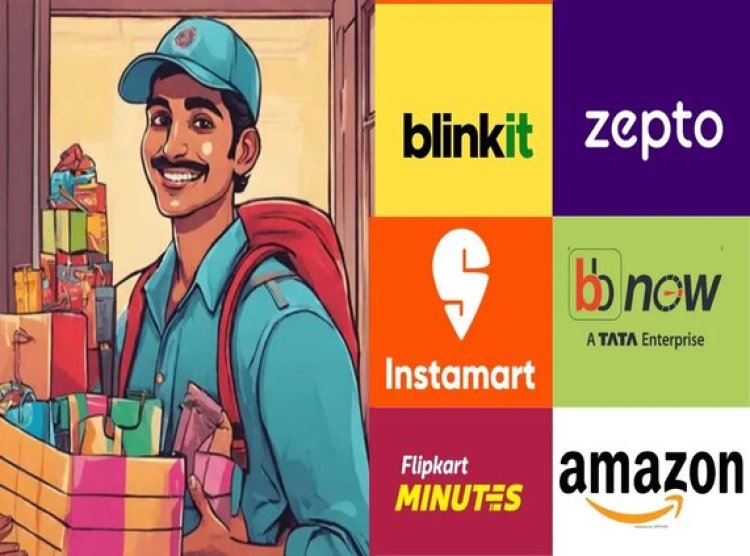Quick Commerce: Growth, Challenges, and Evolving Consumer Habits in 2025
Q-Comm Platforms Redefine Retail: Growth, Challenges, and Regulatory Hurdles Shape the Future of Ultra-Fast Deliveries in 2025

As 2024 draws to a close, quick commerce (q-comm) platforms have become indispensable to consumers, evolving from last-minute solutions to daily essentials. Delivering everything from groceries to gadgets within minutes, q-comm has transformed into a modern-day magic genie for consumers.
Rising Popularity and Market Expansion
According to a Meta report, 91% of online consumers are aware of q-comm platforms, with over 50% actively using them. This rising popularity has driven platforms to diversify their offerings to include electronics, apparel, and baby care products. Giants like Flipkart (Minutes), Amazon (Tez), and Tata (NeuFlash) have entered the q-comm space, while players like Magicpin (magicnow) and Nykaa are experimenting with 10-minute deliveries to stay competitive.
Speed as a Key Differentiator
The promise of ultra-fast delivery remains the backbone of q-comm. Platforms like Zepto achieved deliveries in as little as 25 seconds, while Swiggy Instamart completed one in 89 seconds. These impressive feats extend to high-value items like the iPhone 15, boosting consumer trust in the model.
Despite intense competition, Blinkit, owned by Zomato, holds a 46% market share, followed by Swiggy Instamart (27%), Zepto (21%), and Big Basket (7%). The festive season further fueled growth, with transactions worth $1.1–1.2 billion recorded during this period.
Aggressive Ad Spending
Advertising budgets reflect the sector’s growth ambitions. Zepto allocated ₹303 crore for advertising in FY24, while Blinkit spent ₹191 crore. Parent company Swiggy reported ₹1,850 crore in advertising and promotions during the year.
Expanding into Food Delivery
In 2024, q-comm platforms ventured aggressively into food delivery, leveraging their rapid delivery speeds. Swiggy’s Bolt scaled to over 400 cities, accounting for 5% of food orders, while Blinkit’s Bistro and Zepto Cafe introduced dedicated apps for snacks and food. Zepto Cafe alone reported 30,000 orders per day, highlighting growing consumer demand.
Challenges Ahead
Despite its rapid rise, q-comm faces hurdles in 2025:
- Regulatory Scrutiny: The Confederation of All India Traders (CAIT) raised concerns about violations of FDI norms, the Competition Act, and the Consumer Protection Act.
- Impact on Kirana Stores: Approximately 200,000 kirana stores reportedly shut down in 2024 due to q-comm’s dominance, undermining traditional retail networks.
- Profitability Issues: Sustaining operations with thin margins and high costs remains a significant challenge.
- D2C Reassessment: Direct-to-consumer brands are rethinking their reliance on q-comm due to cost concerns.
As the sector grapples with regulatory, financial, and operational challenges, 2025 will determine whether q-comm solidifies its position as a cornerstone of e-commerce or falters under mounting pressures.

 sheetal
sheetal 










